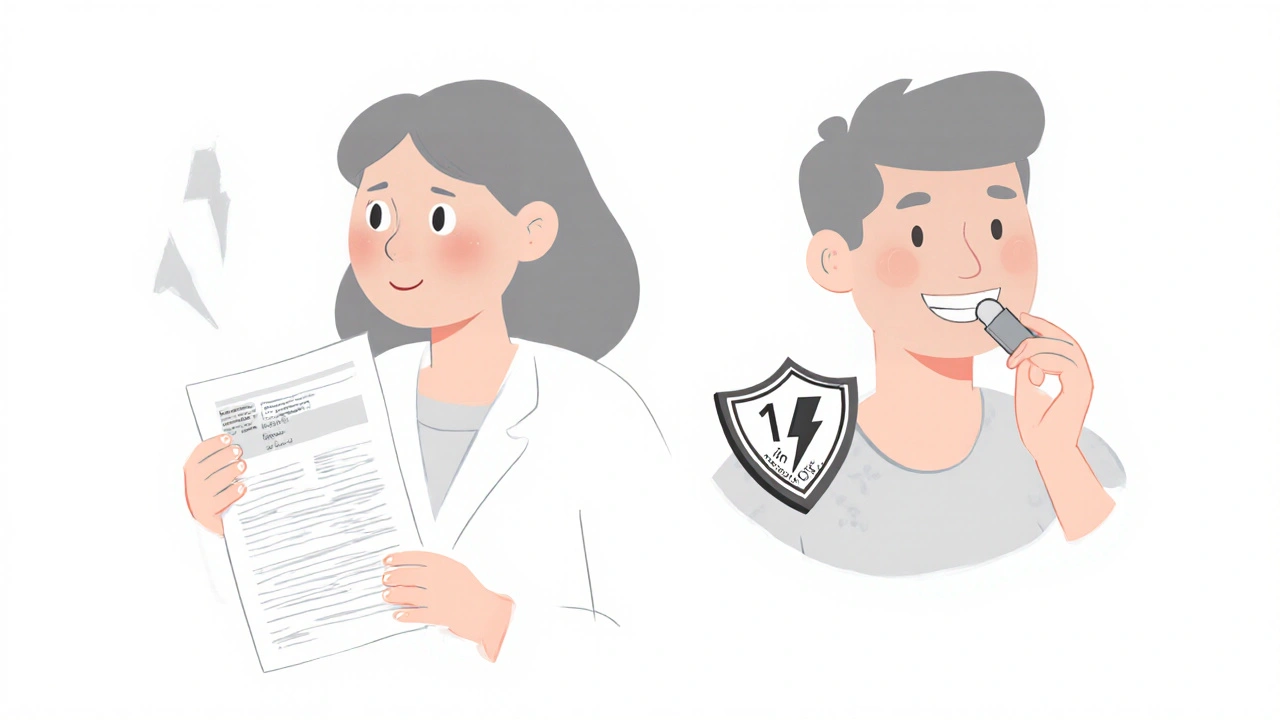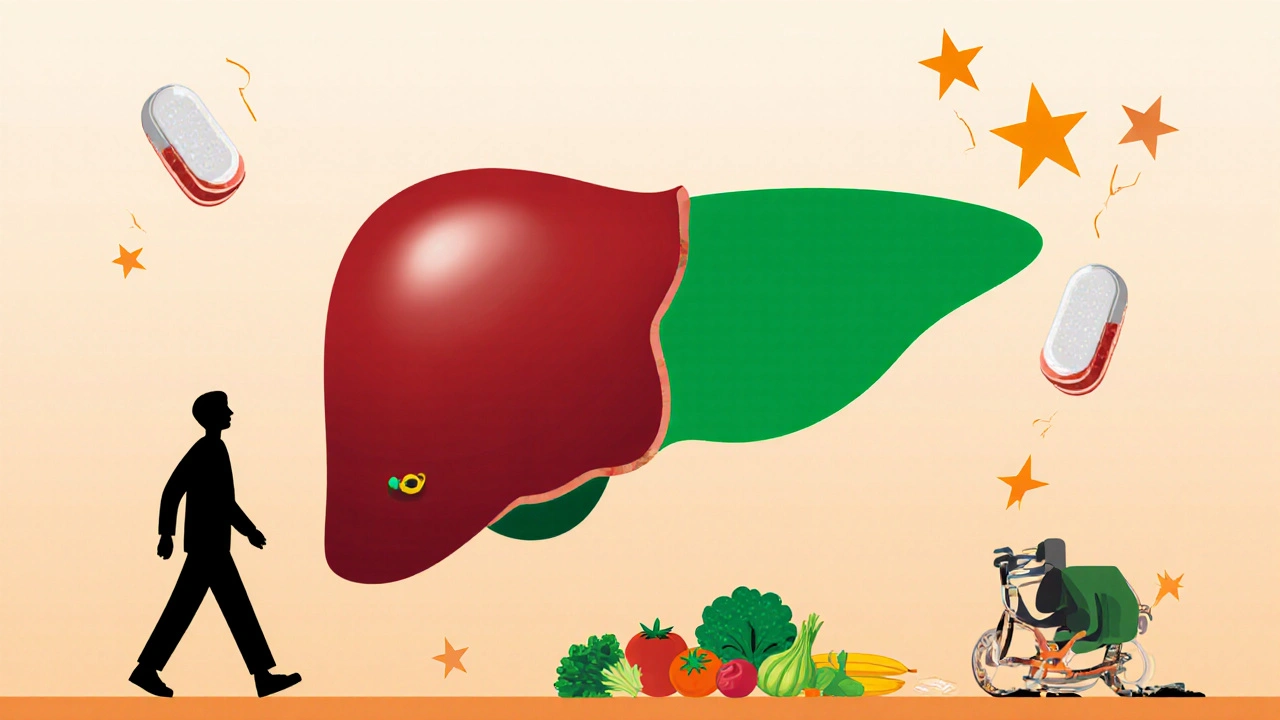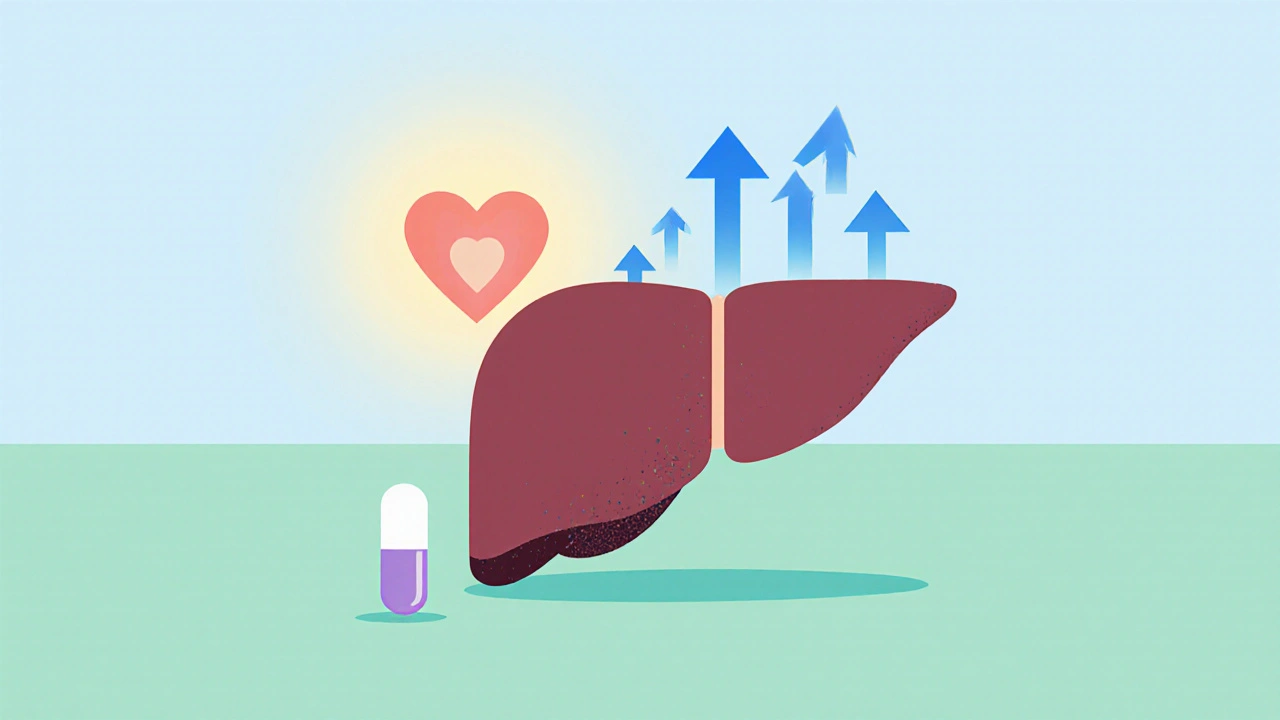Statin Liver Safety Calculator
What Your Liver Enzymes Mean
Mild elevations (<3x ULN) are usually harmless. Serious injury is extremely rare (<1 in 100,000). Your heart attack risk is 1,000x higher than serious liver injury from statins.
Enter Your Lab Results
Key Guidelines
- Mild elevation: 1.5-3x ULN (usually safe)
- Serious risk: >3x ULN + bilirubin >2x ULN
- No routine testing recommended (FDA removed this recommendation)
- Keep statin if you feel well
When you start taking a statin to lower your cholesterol, you’re doing something that could save your life. Statins have been shown to cut heart attacks and strokes by nearly half in high-risk people. But for some, a simple blood test - one that shows rising liver enzymes - can trigger panic. Statin-related liver enzyme elevation is one of the most misunderstood side effects in modern medicine. The truth? It’s rarely dangerous, and stopping your statin over it might be riskier than keeping it.
What Does It Mean When Liver Enzymes Go Up?
Your liver makes two key enzymes: ALT (alanine aminotransferase) and AST (aspartate aminotransferase). When liver cells are stressed or damaged, these enzymes leak into the bloodstream. That’s what a blood test picks up. For most people, a mild rise - say, 1.5 to 3 times the upper limit of normal - doesn’t mean your liver is failing. It often just means your liver is working harder, not breaking down.
Statin-induced enzyme elevations are almost always asymptomatic. You won’t feel tired, jaundiced, or nauseous. No swelling. No pain. Just a number on a lab report that scares you - and sometimes your doctor. In fact, studies show that 98% of patients with elevated liver enzymes on statins have no actual liver damage. The rise is usually temporary, and the enzymes often normalize even if you keep taking the statin.
How Common Is This Really?
Let’s put numbers to fear. About 0.5% to 2% of people on statins will see ALT or AST levels rise above 3 times the upper limit of normal. That’s roughly 1 in 50 to 1 in 200 people. Severe liver injury - like acute liver failure - happens in fewer than 1 in 100,000 people per year. To put that in perspective: you’re more likely to be struck by lightning than to suffer serious statin-related liver damage.
Some statins carry slightly higher risks. Cerivastatin - pulled from the market in 2001 - had the highest rate, but it’s no longer used. Today’s most common statins like atorvastatin and simvastatin have a small risk, while pravastatin and rosuvastatin show the lowest. One study found pravastatin caused >3x ULN elevations in only 0.3% of users. That’s less than 1 in 300.
Why Do Statins Affect Liver Enzymes?
It’s not about toxicity. Statins don’t poison your liver. Instead, they interfere with a few metabolic pathways inside liver cells. Lipophilic statins - like simvastatin and atorvastatin - easily enter liver cells and can slightly disrupt mitochondrial function. Mitochondria are the energy factories of cells. When they’re stressed, they release small amounts of reactive oxygen species. That’s enough to trigger a stress signal in the liver, causing enzymes to leak into the blood.
It’s not unique to statins. Even exercise can raise ALT temporarily. So can a fatty liver - which many statin patients already have. In fact, people with nonalcoholic fatty liver disease (NAFLD) - the most common liver condition in the U.S. - actually have lower rates of statin-induced enzyme spikes than people without it. That’s because statins improve fat metabolism in the liver, helping to heal the very condition that’s causing the enzymes to rise.
What Does the Science Say About Monitoring?
In 2012, the FDA removed its recommendation for routine liver function tests every six months. Why? Because after reviewing 20 million patient-years of data, they found no evidence that regular testing caught serious liver injury early. And the tests caused more harm than good - by leading to unnecessary statin stops.
Today, guidelines from the American College of Cardiology, the American Heart Association, and the American Gastroenterological Association all agree: Don’t test routinely. Get a baseline test before starting a statin. If your liver enzymes are already high, investigate why - maybe you have hepatitis, drink too much alcohol, or have NAFLD. Then start the statin.
After that, only retest if you develop symptoms - like yellowing skin, dark urine, or right-sided abdominal pain. If your enzymes rise mildly (under 3x ULN) and you feel fine, keep taking the statin. Recheck in 4 to 6 weeks. Most of the time, they’ll come back down on their own.

When Should You Worry?
True statin-induced liver injury is rare - and it looks different from a simple enzyme rise. Signs of real danger include:
- ALT or AST >3x ULN and bilirubin >2x ULN
- Jaundice (yellow eyes or skin)
- Severe fatigue, nausea, vomiting
- Dark urine or pale stools
- Abdominal swelling or pain
If you have any of these, stop the statin and call your doctor immediately. But if your only abnormality is a mildly elevated ALT - say, from 35 to 110 U/L - and you feel great? That’s not a reason to quit.
One study followed 17 patients who stopped their statins because of isolated enzyme elevations under 3x ULN. Five of them had a heart attack or stroke within 18 months. Their risk of death from heart disease jumped. Their liver enzymes? They were fine.
What If You’ve Been Stopped Because of This?
Many people are told to stop statins over a mild enzyme rise - even though guidelines say not to. One survey found 22% of statin users had stopped at least once because of liver concerns. But 64% of them restarted after their doctor explained the data.
If you’ve been taken off a statin over a liver enzyme issue, ask for a rechallenge. That means restarting the same statin under supervision. In 80% of cases, the enzymes rise again - but stay mild - and then normalize. You can often stay on the drug safely. If you can’t tolerate the first statin, switch to another. Pravastatin or rosuvastatin are gentler on the liver. One patient on Reddit saw his ALT jump from 28 to 142 on atorvastatin. After switching to pravastatin, his levels dropped back to 31 - and his cholesterol stayed controlled.
Who’s at Higher Risk?
Some people are more likely to see enzyme changes:
- People over 75
- Those with kidney disease (creatinine clearance under 30 mL/min)
- People taking statins with certain antibiotics (like clarithromycin) or antifungals (like ketoconazole)
- Those with the SLCO1B1 gene variant (a genetic factor that slows statin clearance)
If you’re in one of these groups, your doctor might start you on a lower dose or a gentler statin. There’s now a genetic test called StatinSafety Plus that checks for the SLCO1B1 variant. But it’s not for everyone - only those on high-dose statins with existing liver issues. For most, it’s overkill.

Can You Do Anything to Protect Your Liver?
There’s no magic supplement that prevents statin-related enzyme rises. Coenzyme Q10 is often marketed as a solution, but while one small trial showed it lowered ALT levels by 43%, there’s no proof it reduces heart attacks or prevents liver damage. It’s not recommended as standard care.
What does help? A healthy lifestyle. Lose weight if you’re overweight. Cut back on sugar and alcohol. Move your body. These steps improve your liver health - and make statins work better. In fact, many people who start statins and improve their diet see their liver enzymes drop - because their fatty liver is healing.
Why Do Doctors Still Order Routine Tests?
Despite clear guidelines, 35% of primary care doctors still order liver tests every six months. Why? Fear. Tradition. Defensive medicine. It’s easier to order a test than to explain to a patient why they don’t need one.
This practice costs the U.S. healthcare system over $1.2 billion a year. And it’s doing harm. Every unnecessary test leads to anxiety. Every anxiety-driven stop increases heart attack risk. The European Atherosclerosis Society estimates that liver safety fears are part of why 14.7 million high-risk Americans aren’t on statins at all.
Bottom Line: Don’t Panic. Don’t Quit.
Statin-related liver enzyme elevations are almost always harmless. They’re a signal, not a crisis. The real danger isn’t the statin - it’s stopping it because you misunderstood a lab result.
If you’re on a statin and your liver enzymes rise slightly - and you feel fine - keep taking it. Talk to your doctor. Get a repeat test in 4 to 6 weeks. Most likely, everything will be fine. If you’ve been taken off a statin over this, ask for a rechallenge. You might be able to get back on it safely.
Statin benefits? They’re huge. The number of people you need to treat to prevent one heart attack or stroke is 39. The number you need to treat to cause one serious liver injury? About 1,000. That’s not a risk. That’s a bargain.
What Should You Do Next?
- If you’re starting a statin: Get a baseline liver test. Then wait until you have symptoms or your doctor says otherwise.
- If your enzymes are mildly high: Don’t stop. Recheck in 4-6 weeks. Keep the statin unless you have jaundice or severe symptoms.
- If you were taken off a statin: Ask your doctor about switching to pravastatin or rosuvastatin. Try a rechallenge.
- If you’re anxious: Talk to your doctor. Bring this article. Ask: “Is my liver enzyme rise dangerous - or just a normal side effect?”
The goal isn’t perfect liver enzymes. It’s a healthy heart. Statins deliver that - safely, reliably, and with fewer side effects than most people think.


Written by Felix Greendale
View all posts by: Felix Greendale